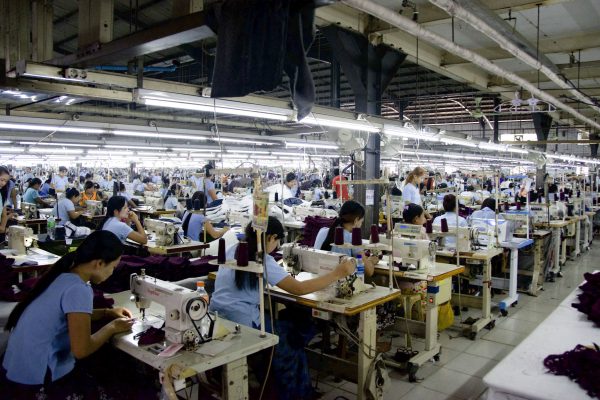
Myanmar’s garment sector, that drove the country’s export-oriented growth post political and economic transition in 2011, has been deeply impacted by the pandemic. From 2012 to 2019, Myanmar’s garment exports grew fivefold accounting for 28 per cent its total export value, reveals The Diplomat. The country also won preferential access to the European markets under the European Union’s Everything But Arms (EBA) scheme. Garment industries growth also boosted employment in the country, particularly amongst young women forming 90 per cent of garment workers.
The gains achieved by the industry were unraveled by the outbreak of COVID-19 in 2020. A survey by the EU’s Center for Economic and Social Development indicates, Myanmar’s garment and footwear industry faced 26 per cent labor shortage in 2020. Workers also faced pay cuts and long working hours, reducing their remittances. EU’s Myun Ku Program and the government’s COVID-1 Economic Relief Plan also failed to uplift workers’ conditions.
Global brands exit due to military coup
The military coup in February, 2021 caused additional supply and demand shocks to the garment industry with major global brands including H&M and Primark suspending operations in the country. Demand and liquidity shortages and transportation disruptions intensified factory closures and workers’ layoffs. Almost one in three garment factories were compelled to shut in 2021.
The value of local currency kyat also dropped to historic low in September 2021, reducing the purchasing power of garment workers. The coup also pressurized garment workers politically forcing them to navigate through conflict zones or military checkpoints in areas under martial law to reach their workplaces. The emergence of labor unions also made garment workers targets of factory raids and arrests by security forces attempting to quash anti-coup resistance.
The junta also targeted garment workers during its anti-coup labor activism. It banned 16 labor organizations and arrested prominent union leaders. These impacted unions’ abilities to improve laborers’ working conditions. One year after the coup, Myanmar’s political uncertainly continues to plague garment industry recovery, says a Work Bank study. Garment workers face the difficult task of balancing the industry’s COVID-19 recovery with ongoing efforts to take a stance against the junta.
Exports to determine garment sector recovery
The future recovery of Myanmar’s garment sector is likely to be shaped by its exports to the EU, US and Japan. In December 2021, the primary international labor rights organization - Action, Collaboration, Transformation (ACT) initiative –suspended operations in Myanmar compelling 130 trade organizations to urge international fashion brands to divest from Myanmar and support the All Burma Federation of Trade Unions and the Federation of General Workers Myanmar.
Trade Unions have also activists have also urged the European Union, the United States, and other governments to expand sanctions on Myanmar and withdraw its EBA preferential arrangements.
Understanding workers’ challenges
However, labor unions’ demand for broader sanctions have found no support from global industry leaders, reveals a December 2021 survey by the Workers’ Solidarity League of Burma. Such varied tactic by individual workers and unions highlight the complexity of Myanmar garment workers’ approach to their work. Acknowledging this complexity, the European Chamber of Commerce in Myanmar plans to continue supporting fashion brands sourcing from the country and provide laborers decent work opportunities.
To introduce an effective solution for the Myanmar crisis, trade unions need to understand workers’ challenges. They need to adopt responsible labor practices to reduce harm to workers even as European and US stakeholders seek to take stand against the military junta.











